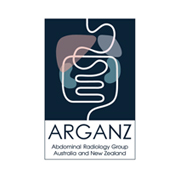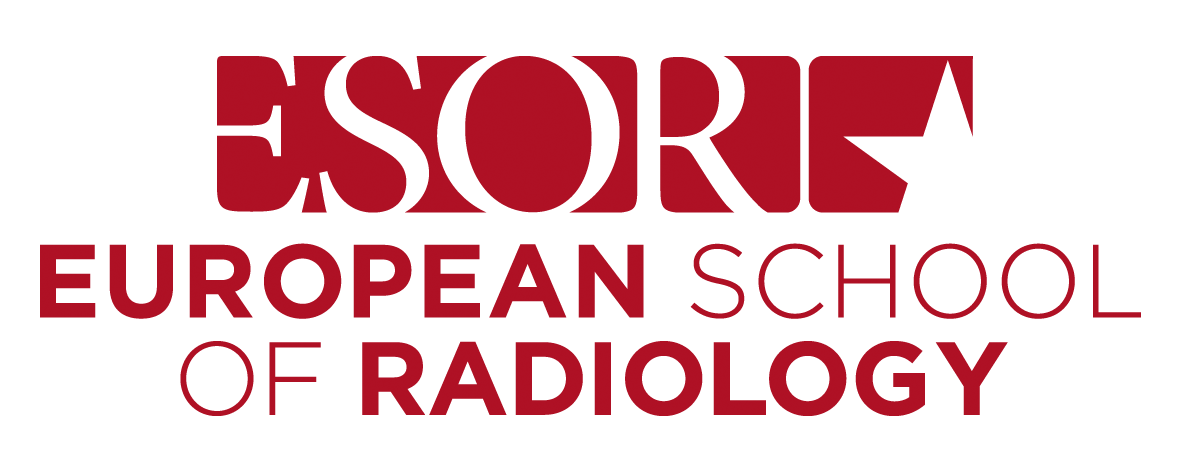ESGAR – ARGANZ Fellowship Exchange Programme

General Information
ESGAR and ARGANZ (Abdominal Radiology Group of Australia and New Zealand)are excited to announce the launch of a new collaborative fellowship exchange, starting in 2026. This initiative is designed to enhance international professional development and foster global collaboration in abdominal radiology.
Each year, one ESGAR member will have the opportunity to undertake a 3-month observership in Australia or New Zealand, hosted by an ARGANZ-affiliated training centre. In parallel, one Australian/New Zealand radiologist will travel to Europe for a similar experience at an ESGAR-affiliated institution.
Duration
Opportunity for two 6 week observerships at hospitals in Australia and New Zealand, with the option of 3 months in one location
The 2026 ARGANZ meeting is in Perth, Western Australia, March 28 - 19, 2026. The Fellow will be provided with free registration for onsite attendance, but will need to cover their own flights and accommodation (please note Perth is a significant distance from the fellowship locations).
Location
At one of the following training centres (to be chosen by the applicant during the application process)
Training centres offering this opportunity
Royal Melbourne Hospital, Melbourne, Victoria, Australia
Radiologist contacts: A/Prof Damien Stella (ARGANZ rectal and adrenal focus groups) & Dr Wayland Wang
The Royal Melbourne Hospital (RMH) is a busy tertiary hospital covering all adult non-obstetric/non-gynaecological work, and is one of two accredited Trauma Centres in Melbourne. It also covers a broad range of abdominal and pelvic imaging, including busy MRI and contrast-enhanced ultrasound services. There are weekly Multidisciplinary Meetings (MDM) for HPB, HCC, CRC and urology, as well as a fortnightly IBD MDM.
The ESGAR-ARGANZ Fellow can expect to observe MDM preparation and presentation, sit alongside abdominal radiologists during reporting sessions (US including CEUS, CT, MRI) and have an opportunity to review cases independently.
Prince of Wales Hospital, Sydney, New South Wales, Australia
Radiologist contact: Dr Dean Rabinowitz (ARGANZ executive)
Randwick Hospital Campus is a major public healthcare and research precinct in Sydney's Eastern Suburbs, made up of four co located hospitals — Prince of Wales Hospital, Sydney Children’s Hospital, Randwick, Royal Hospital for Women, and Prince of Wales Private Hospital. It is a leading hub for clinical care, teaching and medical research, in partnership with UNSW Sydney and several research institutes. The newly developed Prince of Wales Hospital Acute Services Building (ASB) delivers modern emergency, ICU, operating theatres, inpatient wards and integrated research and education spaces alongside UNSW labs. In late 2025, the Sydney Children’s Hospital Stage 1 and Minderoo Children’s Comprehensive Cancer Centre will be opened, providing paediatric emergency care, ICU, oncology inpatient units, and a built-for-purpose research/research translation hub for children's cancer.
The ESGAR-ARGANZ Fellow can expect to observe and potentially lead MDT meetings, participate in the education program of registrars, including providing tutorials, and sit alongside abdominal radiologists during reporting sessions (US including CEUS, CT, MRI). In addition, there may be an opportunity to spend some time at local private practices observing work in those settings.
Princess Alexandra Hospital, Brisbane, Queensland, Australia
Radiologist contact: Dr Kate McLean (ARGANZ executive), Dr Sonja Gustafson
Princess Alexandra Hospital is a busy tertiary trauma and transplant centre located in South East Queensland. The imaging department includes diagnostic radiology, vascular and neurointerventional radiology, and nuclear medicine utilising state-of-the-art imaging equipment including CT with multispectral technology, 3T MRI, whole body PET including PET/MRI and comprehensive angiography suites. Princess Alexandra Hospital provides statewide cover for renal and hepatic transplant and peritonectomy surgery, with catchment from far north Queensland extending into New South Wales. Case mix includes all adult non-obstetric/non-gynaecological abdominal pathologies with a multitude of regular multidisciplinary meetings covering trauma, hepatobiliary, upper and lower gastrointestinal, peritoneal and genitourinary pathologies.
The ESGAR-ARGANZ fellow will have the opportunity to observe multidisciplinary meetings, procedures and presentations and review case libraries. There may also be an opportunity to spend time at the nearby Royal Brisbane and Women’s Hospital, another tertiary hospital with a strong abdominal imaging focus.
Christchurch Hospital, Christchurch, New Zealand
Radiologist contacts: Dr Verity Wood (ARGANZ rectal focus group), Dr Sharyn McDonald (Chief of Radiology)
Christchurch hospital is the largest hospital in the South Island of New Zealand, located in the centre of Christchurch city, and serves the wider Canterbury region. It is a tertiary referral hospital with a many subspecialist based radiologists and large volume of clinical meetings. It is a major trauma centre and has a busy Emergency department.
The ESGAR-ARGANZ Fellow can expect to observe MDM (Multidisciplinary Meeting) preparation and presentation, sit alongside abdominal and oncologic radiologists during reporting sessions (including US, CT and MRI) and have an opportunity to review cases independently.
Eligibility
ESGAR Fellows or Active Members for at least three years, in good standing who are board-certified radiologists within 5 years of certification. Applicant must be fluent in English language.
Financial Support
ESGAR will provide a ONE € 5.000,00 travel grant upon completion of the fellowship and provision of a final report about the fellowships.
Hosting
Training and mentorship provided free of charge by the hosting centre.
Additional Benefits
Complimentary registration to the ARGANZ Annual Meeting during the fellowship period, Perth, WA, March 28-29.
Application Details
• Deadline: September 1, 2025
• Required documents:
- Completed application
- Curriculum Vitae (CV) (please use ESGAR template)
- Motivation letter
- Recommendation letter from head of department
Application process
The application deadline has expired. Thank you for your applications. Candidates will be informed shortly about the outcome of their application.
Please note: This fellowship is an observership, not a clinical position, and participants must apply for a tourist visa (not a work visa). Accommodation arrangements are the responsibility of the fellow, though support will be provided by the hosting centre.
Terms & conditions
Please click here to read the terms & conditions.
We warmly invite young radiologists to apply for this enriching experience and become part of this exciting new global exchange programme.
For any questions, please contact the ESGAR Office.
ESGAR - ESOR Exchange Programme

General Information
The trend toward increasing subspecialisation led the European Society of Gastrointestinal and Abdominal Radiology (ESGAR), supported by the European Society of Radiology (ESR) and the European School of Radiology (ESOR), to take the initiative in establishing an exchange programme for fellowships or subspecialisation training in abdominal imaging.
Aim
The application of new technologies to abdominal and gastrointestinal radiology has resulted in amazing breakthroughs, with rapid development and refinement of sophisticated diagnostic imaging tests. These technologic advances over the past decade have affected the requirements for the practice of abdominal imaging.
The Exchange Programme for Abdominal Imaging Fellowship offers an opportunity to complement subspecialisation training in abdominal imaging or an existing structured fellowship programme, through exchange, in this field of radiology. The three months exchange programme will provide an intense modular training in all areas of abdominal imaging, including conventional radiology and fluoroscopy, sonography, CT, MRI, and image-guided biopsies and therapeutic interventions.
The exchange programme is organised through ESOR and will expose trainees to all aspects of abdominal imaging under the supervision of an assigned mentor who is fellow member of ESGAR, in a pre-selected European reference training centre.
Number of available places
There are five fellowship positions available between September and December 2026, with training opportunities at several prestigious centres across Europe.
Eligibility
- This exchange programme applies to radiologists within the first three years after certification, who desire to become subspecialist radiologists.
- The applicant must have knowledge of current clinical practice in radiology with regard to cross-sectional imaging. Competence in producing a radiological report, in communication with clinicians and patients, and knowledge of the principles of administration and management applied to a clinical department with multi-disciplinary staff and high-cost equipment are essential. Understanding the medicolegal implications of uncertainty and errors in diagnostic radiology is necessary. A clinical background in other disciplines which was achieved through clinical experience and training prior to entering the fellowship is important, whereas, clinical experience in gastroenterology, oncology or visceral surgery would be a benefit.
- Applicants must be proficient in English.
- ESR and ESGAR membership fees for the respective year must be settled.
Application
For further details on the application process and a complete list of participating centres, please visit the ESOR website
Application for 2025 closed.
Next application round will open in February 2026.
Successful applicants 2025
Giulio Bagnacci (Siena/IT) → Lapeyronie University Hospital, Montpellier/FR
Laura Cavero Barreras (San Sebastian/ES) → Fondazione IRCCS San Gerardo die Tintori Monza, Monza/IT
Liseth Gonzalez (Bogotá/CO) → Hospital Universitario y Politecnico La Fe, Valencia/ES
Ümmühan Ebru Karabulut (Istanbul/TR) → Università degli Studi di Palermo, Palermo/IT
Tomáš Koutný (Prague/CZ) → General Hospital Treviso, Treviso/IT
Cosmin Rusneac (Cluj Napoca/RO) → Hôpital Saint-Joseph, Paris/FR
Successful applicants 2024
Angela Ammirabile (Milan/IT) → Hôpital Beaujon, Clichy/FR
Katarzyna Biernacka-Racicot (Lodz/PL) → Champalimaud Foundation, Lisbon/PT
Samuele Ceglar (Kreuzlingen/CH) → Fondazione IRCCS San Gerardo dei Tintori, University of Milano-Bicocca, Monza/IT
Stefan Milosevic (Belgrade/RS) → Medical University of Vienna, Vienna/AT
Jurgis Petkevicius (Launas/LT) → Università degli Studi di Palermo, Policlinico "Paolo Giaccone", Palermo/IT
Maria Alejandra Rueda (Bogota/CO) → Hospital Universitario y Politécnico La Fe, Valencia/ES
Katarina Stošić (Belgrade/RS) → General Hospital Treviso Italy, Treviso/IT
Mohammad Yunus Limbada (London/UK) → Hôpital Saint-Joseph, Paris/FR
